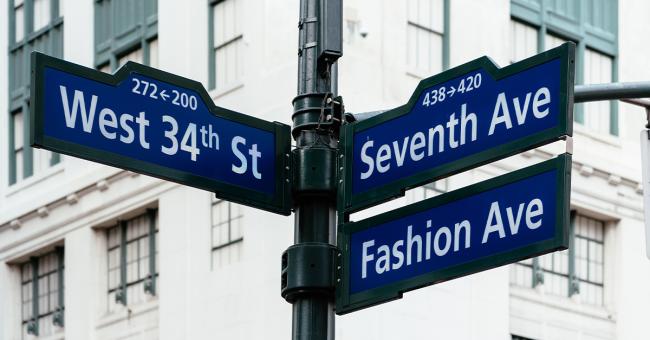NY Fashion Act: Sustainability Is Trending in Fashion

Companies and consumers alike are increasingly concerned about the impact their clothes have on the environment and workers. New York State, one of the world’s fashion capitals, is responding to the call with newly proposed legislation that has the potential to improve standards across the globe. On January 7, New York State Senator Alessandra Biaggi and Assemblywoman Anna R. Kelles introduced the Fashion Sustainability and Social Accountability Act (the Fashion Act) with support from a coalition that included environmental and human rights advocacy groups, as well as industry players like the designer Stella McCartney and company Ferrara Manufacturing.
“Sadly, the idea of us self-regulating [is] not a fair thing to ask of an industry,” McCartney told the Financial Times. “We need to be helped. If we could just have some regulation, some policies, some [standardized] methods to measure our impact.”
If passed, the law will be groundbreaking. Despite the industry’s immense contribution to pollution—responsible for 4 to 8.6 percent of the world’s greenhouse gas footprint—its environmental impacts are under-regulated. Supply chains that reach across continents are difficult to track and reporting is voluntary, therefore often inconsistent and unaudited.
“Sadly, the idea of us self-regulating [is] not a fair thing to ask of an industry. We need to be helped. If we could just have some regulation, some policies, some [standardized] methods to measure our impact.” – Stella McCartney
Meanwhile, customers want to know that the clothes they buy are not hurting the environment or the people who made them. According to the CGS U.S. Consumer Sustainability Survey, more than 66 percent of respondents consider sustainability when making a purchase. For companies who want to meet the demand, the Fashion Law levels the playing field. It ensures that investing in sustainable practices is not a disadvantage when competing with brands that profit from externalizing costs onto the environment and workers.
Under the law, the environmental impacts of fashion production would become more transparent, requiring companies with worldwide total revenue of over $100 million to report their environmental, social, and governance (ESG) policies. Businesses would have to map at least 50 percent of their supply chains, report their greenhouse gas emissions, water consumption, chemical use and the total volume of material they produce. Additionally, they would have to meet “Science Based Targets” for carbon consumption as set by the Paris Agreement.
On the labor side, companies must disclose, among other information, median employee wages compared with minimum and living wages. Through enforcement by the New York State Attorney General and civil lawsuits, those failing to comply could face fines up to 2 percent of their revenue.
Legislators hope to pass the bill this spring, after which companies would have a year to meet the supply-chain mapping requirement and 18 months for the impact disclosures.
The bill has found support from many within the industry, though some stakeholders think the proposal falls short. In a letter, a group of organizations dedicated to diverting apparel from landfills urged the bill’s sponsors to include stricter language for managing textile waste and to provide incentives for reusing fabrics.
That’s a real concern. In 2018, the U.S. Environmental Protection Agency found that the generation of textiles made up 17 million tons—the equivalent of about 170,000 blue whales—of Municipal Solid Waste (MSW). The recycling rate for textiles in clothing and footwear was only 13 percent, and reuse was not recorded.
“To broaden the bill’s influence, we should consider tax policy incentives to encourage brands and retailers to adopt reuse and other circular business models,” James Reinhart, CEO of ThredUp, told Sourcing Journal. “Further collaboration across public and private stakeholders in the industry will be the fastest path forward in ushering in a more sustainable and circular future for fashion.”
The Fashion Act would present companies with plenty of challenges, however. New investments in technology would be necessary to achieve supply chain transparency, for example, and many would have to adjust their environmental and labor standards. Nevertheless, with shifting consumer demand and a global acknowledgment of the climate crisis, the act could usher in fresh trends in the fashion industry.
Factory production management technology, such as BlueCherry® Shop Floor Control, offers powerful real-time data and transparency to manufacturers and brands, which can aid brands with sustainability, incentive pay and many other areas of improvement. For more on how it works, get your copy of our Visibility Report, produced in partnership with Sourcing Journal.

